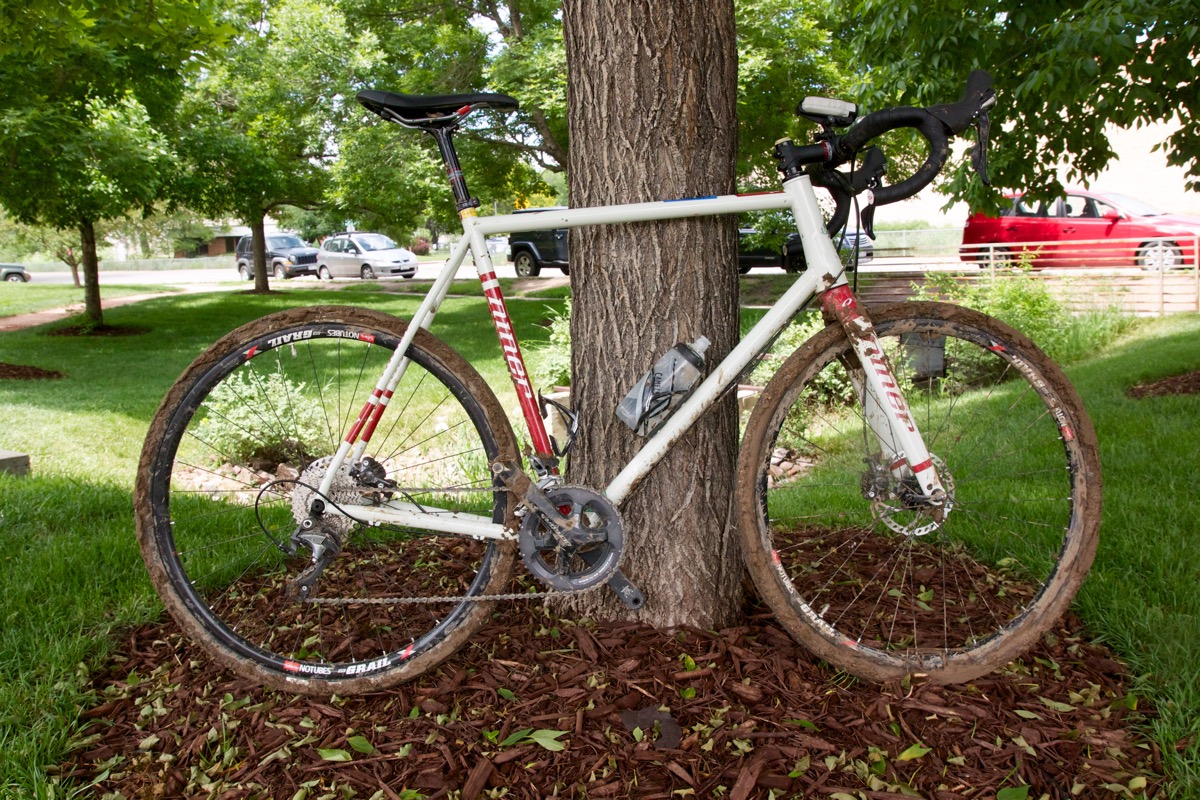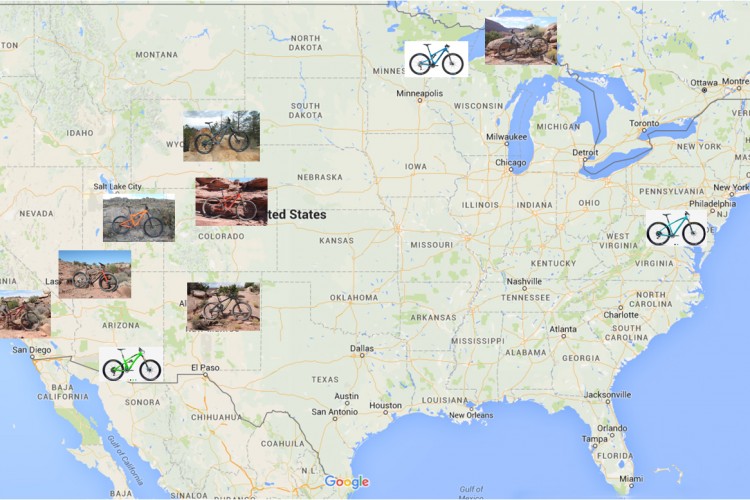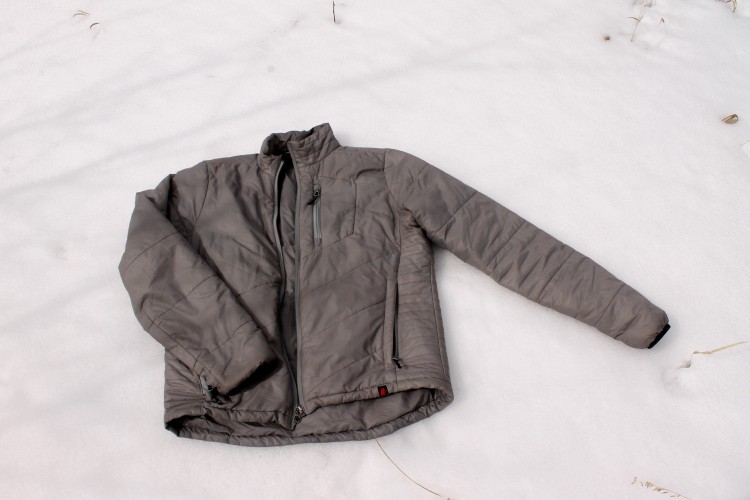
Any opinions expressed in this article are Jeff’s personal opinions, and do not necessarily reflect the opinions of Singletracks.com.
There’s a feature on Singletracks that allows registered users to post questions about individual mountain bike trails, and our readers have the opportunity to answer those questions to help a brother (or sister) out. It’s great seeing how helpful our readers can be, especially when it comes to answering inexperienced riders’ questions.
One question that we see fairly often goes like this: “Can I ride X type of bike on Y trail?” For example, someone might want to know if their hardtail is up to the challenge of riding Porcupine Rim in Moab, or if they can “get away with” riding a cyclocross bike at FATS in South Carolina. And the answer (in my own head, anyway) is always a resounding “YES!”
It’s Not About the Bike
Most of us know the rejoinder to this one; it’s not about the bike, it’s about the rider. But mountain bikers are much more than just “riders.” People “ride” the bus. No, when we straddle a mountain bike and venture off-road, we’re both pilot AND engine. It’s pretty awesome to think about how this is even possible!
Every mountain biker has at one point or another seen, either in person or in an online video, someone piloting a wholly “inappropriate” bike on a trail and making it look easy. How do they do this? Skill has a lot to do with it, as does confidence (more on that later).
Unless You’re Racing, You’ll Do Fine
Riding a hardtail on Porcupine Rim is entirely possible–some would even say enjoyable–but it’s certainly not the fastest way down the trail. I’ve found for me personally, there are few, if any trails, I’ve been unable to ride due to bike choice alone. Wheels, no matter what size or diameter, are designed to roll over stuff, even if that means slowing things way down and picking lines carefully.
The other thing to keep in mind is that walking is often a part of off-road biking no matter what type of bike you’re riding. I used to beat myself up whenever I had to dismount during a ride, feeling that somehow the ride didn’t count because I didn’t pedal my way around the entire loop. But after mountain biking for many years and experiencing some really epic trails with mandatory hike-a-bike sections (think climbs too steep and loose to get traction), I’ve learned that hiking can actually open up some pretty special riding opportunities.
So sure, choosing the wrong bike for a trail might mean a little additional hiking, but that doesn’t mean anything. The ride still counts, and as long as the rider is having fun, it’s all sweetness and light.
Some mountain bike trails are said to include “mandatory” features with “no ridearounds,” which can steer riders toward a certain bike selection. But while there may not be a true “ridearound,” there is usually at least a walkaround. If we’re talking about a sheer cliff that rings a mountain, then yeah, a big bike could be necessary. But if you’re even considering riding a trail like this, chances are you know what kind of bike you need.
“You go to school to learn, not for a fashion show.”
For some odd reason, I once decided to take a class to learn how to play golf. Actually, the class was mostly designed to teach golf etiquette, like how to dress on the course and how to let others play through when you’re slow. The thing is, many golf courses actually DO have dress codes, but this is mountain biking and you can ride whatever the hell you want (unless it has a motor and motorized vehicles are prohibited). There is no equipment check at the trailhead, so feel free to run what you brung.
The only exception (other than the pedal-assist thing) is that everyone should wear a helmet. Fortunately we rarely get the question, “Are helmets required” for trails posted to Singletracks. When we do, the answer is a swift and resounding, “YES,” even if it’s not the official answer.
No one is going to make fun of you for riding your BMX on a mountain bike trail. You might get some looks if you take your drop bar road bike on a double black diamond trail, but those will be looks of awe, not the judge-y ones. You can do it!
The Real Question
I suspect some riders who ask if they can ride a certain bike on a certain trail are really asking a more specific question. Here are a couple translations.
“Will I break my bike if I ride it on this trail?” Possibly, but that all depends on how skilled you are and how fast or aggressively you plan to ride. But this is true whether you’re on a carbon fiber road bike or a downhill bike. Bikes can break, and all of us have different limits. If you do break your bike, don’t blame the trail.
“Will I have a good time if I ride this type of bike on this trail?” Again, that’s up to the rider! If we approach a trail and/or a situation with a positive outlook, we’ll generally get a positive result. If someone shows up at a trailhead frustrated because they have to ride their brother’s singlespeed that’s too big, then chances are fun times will not be had. On the other hand, if someone has a bike they love to ride and are really comfortable with, they should be able to ride it anywhere and have a blast.
The bottom line is, the only person who can answer the question, “Can I ride X bike on Y trail?” is the person who asked it! Every one of us has a unique temperament and set of skills, so it’s up to us to make the decision about which trails to ride and how to ride them. Overconfidence can be a killer too, so be realistic when you attempt to answer this question for yourself.
I personally prefer to approach every trail with optimism, confident that whatever the trail throws at me, I can handle it. After all, the bike is the one who is just along for the ride.























8 Comments
May 3, 2017
May 2, 2017
May 2, 2017
May 2, 2017
May 2, 2017
May 2, 2017
I have three bikes, each with their own strengths.
But I'm perfectly happy to hit some smooth xc on my enduro bike and I have no problem shredding some gnar on my xc hardtail. It can be really run to have the perfect bike for a particular trail, but it even with multiple bikes, you can't always have the "right" bike on every trail and even within a trail, conditions may vary greatly, so being happy to ride what you're riding on what you're riding is key.
If you're thinking about the bike more than the ride, you're not doing it right :-)
May 4, 2017
May 2, 2017